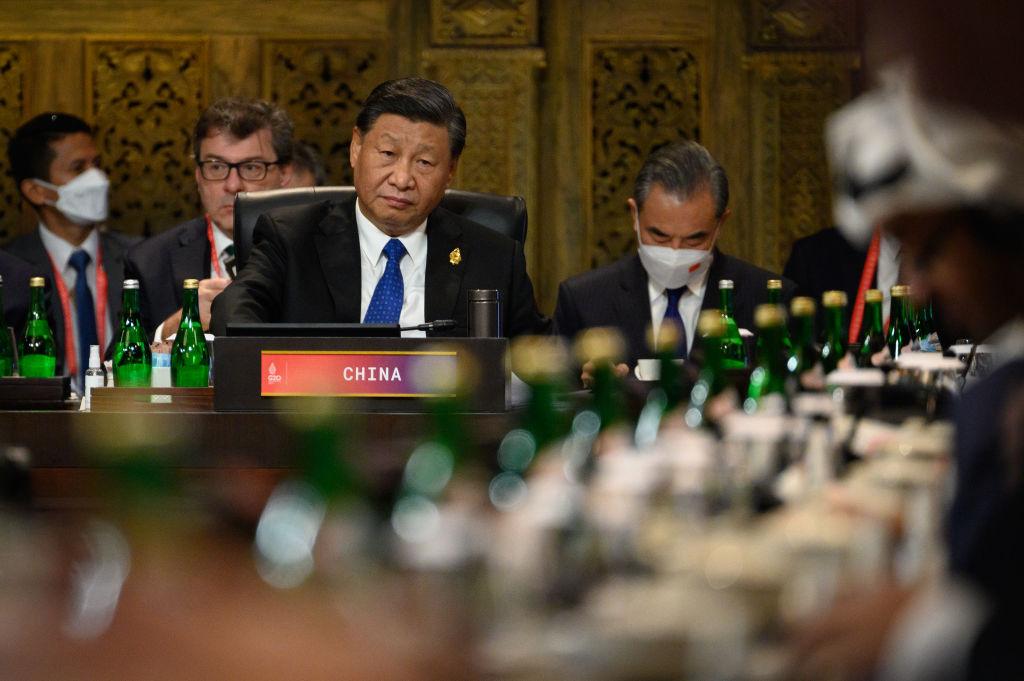Is trade China’s trump card?
Posted By Carl Bildt on November 22, 2022 @ 11:00

It took US President Joe Biden’s administration quite a while to produce its national security strategy [1], which it finally released in October. Though the White House did issue an interim document [2] in March 2021, the final product seems to have required more work than anticipated.
The reason isn’t difficult to understand. While the interim document focused primarily on China and treated Russia more as a regional nuisance, reality intervened with a vengeance in February when Russian President Vladimir Putin launched a war to ‘denazify’, ‘demilitarize’ and essentially eliminate Ukraine. Where the interim strategy had described Russia as ‘disruptive’, the final one acknowledges that it ‘now poses an immediate and persistent threat to international peace and stability’, owing to its embrace of ‘an imperialist foreign policy’.
Nonetheless, China still looms largest in the Biden administration’s strategic outlook, as well it should. The final document makes clear that China is America’s ‘only competitor with both the intent to reshape the international order and, increasingly, the economic, diplomatic, military, and technological power to do so’. As Graham Allison [3] of Harvard University has observed with his ‘Thucydides trap [4]’ thesis, both China’s rising power and the fear that it instils in the dominant power are driving the strategic and foreign-policy narrative.
Yet of all the instruments that the United States could deploy in this new great-power competition, a major one is missing from its new strategy: trade. This omission is especially glaring because China owes its own rise to its success as a trading power.
Earlier US administrations understood that trade was key to America’s global dominance. President Barack Obama’s 2015 national security strategy [5], for example, outlined an ambitious trade agenda designed to put the US ‘at the centre of a free trade zone covering two-thirds of the global economy’. The Obama administration then negotiated a trade pact with 11 other Pacific rim countries, excluding China, and a transatlantic investment agreement. But both the Trans-Pacific Partnership and the Transatlantic Trade and Investment Partnership were scrapped by president Donald Trump, whose administration framed trade, falsely, as a source of American humiliation and impoverishment.
True, the Biden strategy does note, in passing, that ‘America’s prosperity also relies on a fair and open trade and international economic system’. But it deliberately avoids the word ‘free’ in its reference to trade, and it draws no policy conclusions from this important observation. Instead, it emphasises measures ‘beyond trade’, with numerous references to efforts by the EU–US Trade and Technology Council and the Quad grouping of Australia, India, Japan and the US to address supply-chain issues through tighter technology and investment controls. These are undoubtedly important concerns. But such measures are no substitute for a strong policy oriented towards opening global markets for trade and investment.
Recent experience shows why pursuing new trade agreements should remain a top priority. The EU-South Korea free-trade agreement is only a little over a decade old, but it has already boosted bilateral trade by more than 50% [6], with far-reaching benefits for both sides. By the same token, trade between the European Union and the United Kingdom has already declined by approximately 15% [7] since Brexit, with obvious deleterious effects for the UK economy, in particular. While there are no new tariffs, many more rules, regulations and standards now must be navigated. Free-trade agreements are often taken for granted. But as these examples show, they matter a lot.
While China doesn’t always live up to its commitments under trade agreements, that has not prevented it from deepening its trade relations. While rather thin, the new Chinese-centred Regional Comprehensive Economic Partnership is now the widest trade agreement in the world, and China has also applied to join the successor to the TPP, the Comprehensive and Progressive Agreement for Trans-Pacific Partnership (the US has not).
The importance of China’s aggressive trade agenda should not be underestimated. China may not invade other countries (yet), but it is eagerly building trade and economic relationships, and there is no question that these also strengthen its political power. The difference between China’s and America’s trade trajectories is already striking. Of the world’s 193 countries, only 20 count the US—still the world’s largest economy—as their number-one trading partner. This list includes Canada, Mexico and many small Caribbean and Central American economies, but not a single Asian or African country.
By contrast, China is now the EU’s largest trading partner, and the rest of the world is increasingly divided between these two trading powers. In addition to dominating much of the Pacific region, China is very important in Africa and is making significant inroads in Latin America. Strikingly, there are now more than 100 countries [8] that trade twice as much with China as they do with the US.
Between the glaring omission of trade from its national security strategy and the strengthening protectionist tendencies in its domestic policymaking, the US is clearly at risk of falling behind. While the EU can and should advocate deeper and more open global trade relations, the absence of the US from these efforts means that China will continue to gain the upper hand. That will have obvious geopolitical ramifications down the road. American leaders should reconsider their current stance before it is too late.
Article printed from The Strategist: https://aspistrategist.ru
URL to article: /is-trade-chinas-trump-card/
URLs in this post:
[1] national security strategy: https://www.whitehouse.gov/wp-content/uploads/2022/10/Biden-Harris-Administrations-National-Security-Strategy-10.2022.pdf
[2] interim document: https://www.whitehouse.gov/wp-content/uploads/2021/03/NSC-1v2.pdf
[3] Graham Allison: https://www.project-syndicate.org/columnist/graham-allison
[4] Thucydides trap: https://www.harpercollins.com/products/destined-for-war-graham-allison?variant=39935695978530
[5] 2015 national security strategy: https://obamawhitehouse.archives.gov/sites/default/files/docs/2015_national_security_strategy_2.pdf
[6] 50%: https://policy.trade.ec.europa.eu/eu-trade-relationships-country-and-region/countries-and-regions/south-korea_en
[7] 15%: https://www.ft.com/content/2f63ef97-8d49-47a4-accd-4fb2e7ee9a5a
[8] more than 100 countries: https://www.visualcapitalist.com/china-u-s-worlds-trading-partner/
Click here to print.